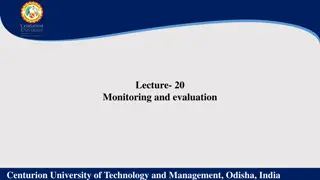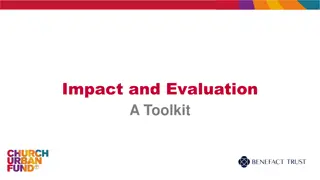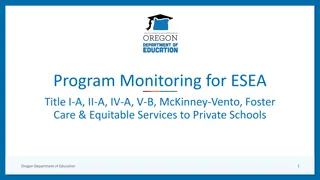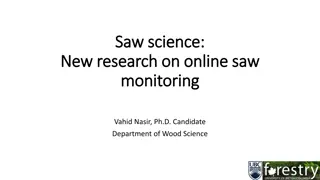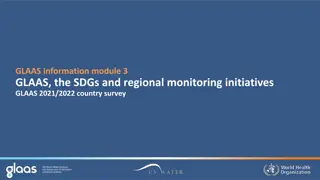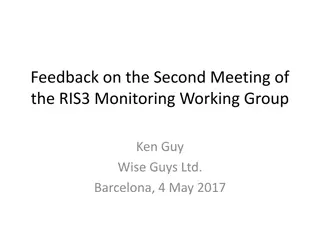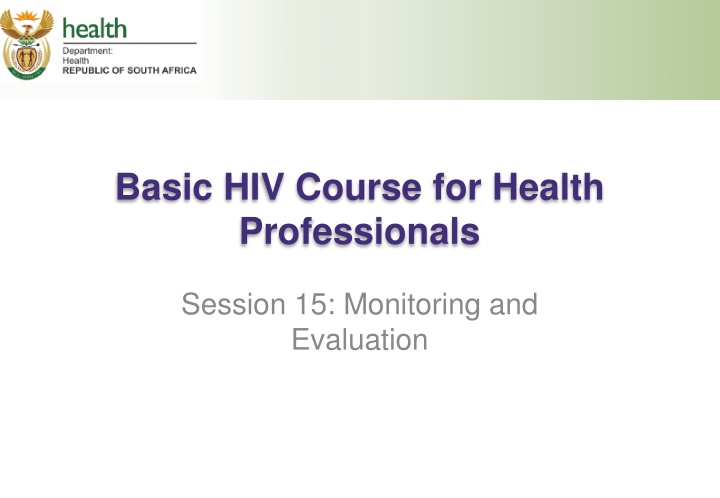
Monitoring and Evaluation in HIV Programs
Learn about the importance of monitoring and evaluation in HIV programs, data collection tools, and the purpose of tracking progress to improve patient outcomes and program effectiveness.
Download Presentation

Please find below an Image/Link to download the presentation.
The content on the website is provided AS IS for your information and personal use only. It may not be sold, licensed, or shared on other websites without obtaining consent from the author. If you encounter any issues during the download, it is possible that the publisher has removed the file from their server.
You are allowed to download the files provided on this website for personal or commercial use, subject to the condition that they are used lawfully. All files are the property of their respective owners.
The content on the website is provided AS IS for your information and personal use only. It may not be sold, licensed, or shared on other websites without obtaining consent from the author.
E N D
Presentation Transcript
Basic HIV Course for Health Professionals Session 15: Monitoring and Evaluation
Learning Objectives By the end of this session participants should be able to: Explain the purpose of monitoring and evaluation Identify different data collection tools Explain the usage of data transmission, analysis and reporting
Purpose of Monitoring and Evaluation The purpose of monitoring and evaluation in the context of HIV is to: Strengthen monitoring and evaluation of the ART programme Provide monitoring and evaluation guidance to the consolidated ART guidelines
Overview of Monitoring and Evaluation (1) Monitoring and evaluation activities allow health facilities, the health department at all levels, and their partners to assess the extent to which the ART programme is: being implemented and achieving the intended objectives achieving targets
Overview of Monitoring and Evaluation (2) Planned and systematic data gathering, analysis and interpretation are essential for: Monitoring clinical care Patient outcome improvement Logistical appropriateness Program cost-effectiveness Performance measures and improvement Monitoring effectiveness and quality of services
What is Monitoring? A continuous function that uses the systematic collection of data on specified indicators to provide management and the main stakeholders of an ongoing development intervention with indications of the extent of progress and achievement of objectives and progress in the use of allocated funds
What is Evaluation? The systematic and objective assessment of an ongoing or completed project, program or policy including its design implementation and results
Data Collection Tools (1) To facilitate standardised and systematic monitoring, it is compulsory for ART (including paediatric and antenatal care) service points to utilise the approved monitoring data collection tools Clinicians treating patients should ensure that all required data collection tools are completed in detail Ccollection tools can be paper based or electronic (Tier. Net)
Data Collection Tools (2) Refer to pages 193 195 of your participant manual to review definitions of all of the data collection tools
Data Transmission, Analysis, Reporting, and Usage (1) The responsibility for data collection, analysis, management, reporting and usage rests at four levels: facility/hospital outreach/mobile services sub-district/district province and national
Data Transmission, Analysis, Reporting, and Usage (2) The process of data management involves: Clinical documentation by clinicians and pharmacists Service provision capturing in register Data entry by data capturer Data aggregation/collation Data analysis Reporting by program coordinator Data usage
Reporting (1) Reports required by different organisations will be passed up the national monitoring and evaluation reporting channels Reporting is bi-directional. Monitoring and evaluation data, whether analysed or raw must be utilised and reported to the section responsible for corrective action Principles of continuous quality improvement dictate that monitoring and evaluation data not be used punitively nor accessed for anything else, including the courts, other than for performance and quality of care improvement action
Reporting (2) Information from the prescribed records and registers is compiled and used to populate various monitoring reports, which are forwarded to the Sub-district, District and National Departments of Health Monthly and quarterly reports should be forwarded to the next level of reporting according to the district health management information system (DHMIS) policy
Any Questions? Thank you!



